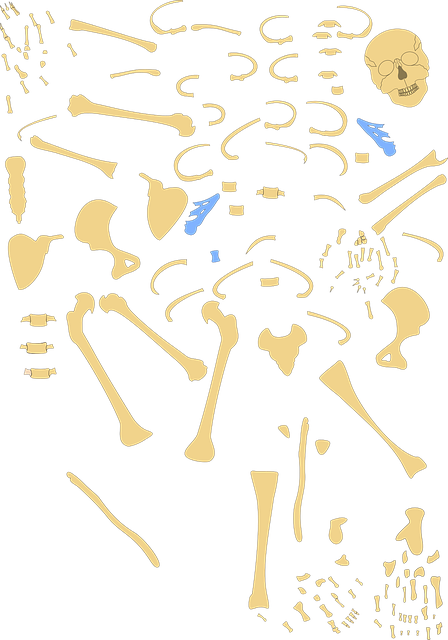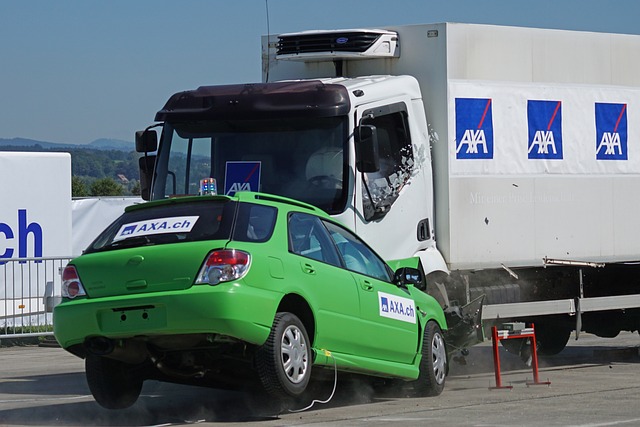Rear-end accidents can cause cervical instability, leading to neck strain or damage. Chiropractic professionals offer specialized care using non-invasive techniques like adjustments and therapies to alleviate pain, reduce inflammation, and restore mobility in rear-end collision victims. Personalized treatment plans focus on realigning the spine, supporting natural healing, and preventing long-term issues, enabling victims to regain pre-accident functionality for improved health and well-being.
“In the aftermath of a rear-end accident, understanding cervical instability and its impact on victims is crucial. This comprehensive guide delves into the intricacies of managing this common injury, focusing on the role of chiropractic care in their recovery journey. From recognizing symptoms to optimizing long-term health, we explore effective strategies for collision victims. Discover how professional, evidence-based chiropractic recovery can significantly enhance post-accident well-being and restore mobility.”
- Understanding Cervical Instability After a Rear-End Accident
- The Role of Chiropractic Care in Recovery for Collision Victims
- Optimizing Chiropractic Recovery for Optimal Long-Term Health
Understanding Cervical Instability After a Rear-End Accident

After a rear-end accident, cervical instability can be a serious concern, often requiring specialized care from chiropractic professionals. When one vehicle collides with another from behind, the force of the impact is abruptly transferred to the car and its occupants, leading to various injuries. In such accidents, the neck is particularly vulnerable due to the rapid deceleration and potential twisting movements. This sudden jolt can cause strain or even damage to the muscles, ligaments, and vertebrae in the cervical spine (neck).
Chiropractors are trained to diagnose and treat conditions related to cervical instability resulting from motor vehicle collisions. They use a range of non-invasive techniques, including adjustments, soft tissue therapy, and specialized exercises, to promote healing and restore mobility. The chiropractic recovery process aims to alleviate pain, reduce inflammation, and improve the overall function of the neck and surrounding areas. This approach is particularly beneficial for rear-end collision victims who may experience long-term effects from such traumas, emphasizing a holistic approach to wellness.
The Role of Chiropractic Care in Recovery for Collision Victims

Chiropractic care plays a crucial role in the recovery process for individuals who have been involved in rear-end collisions. These types of accidents often result in neck and back injuries, which can be exacerbated by the sudden impact and jarring forces experienced during the collision. Chiropractic professionals are trained to assess and address these types of injuries, using non-invasive techniques such as manual adjustments and specialized therapies to reduce pain and improve mobility.
For rear-end collision victims, chiropractic recovery focuses on realigning the spine and supporting the body’s natural healing mechanisms. Chiropractors develop personalized treatment plans that may include regular adjustments, soft tissue therapy, and exercises designed to strengthen muscles and support the vertebrae. This holistic approach not only helps alleviate acute symptoms but also prevents long-term issues from developing, ensuring victims can return to their pre-accident level of function.
Optimizing Chiropractic Recovery for Optimal Long-Term Health

Optimizing chiropractic recovery is paramount for rear-end collision victims aiming for long-term health and well-being. Following a car accident, it’s crucial to seek professional care from experienced chiropractors who specialize in treating whiplash and other injuries associated with such collisions. Chiropractors employ non-invasive techniques, like adjustments and targeted exercises, to alleviate pain, reduce inflammation, and restore proper alignment of the cervical spine.
A comprehensive treatment plan tailored to each patient’s unique needs is key. This may include regular adjustments, physical therapy, and patient education on posture, movement, and injury prevention. By prioritizing chiropractic recovery, individuals can mitigate long-term health risks, enhance mobility, and regain control over their lives after a rear-end accident.
Rear-end accidents can lead to cervical instability, a serious condition that requires prompt and specialized care. Chiropractic treatment plays a pivotal role in managing this issue, focusing on gentle adjustments and holistic healing for collision victims. By optimizing chiropractic recovery, patients can achieve long-term health benefits, reducing pain and improving overall mobility after such traumatic events. This tailored approach ensures victims receive the best possible care for their unique needs.














